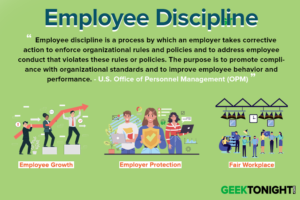In the present world of business competition, an organization’s prosperity significantly hinges on the commitment and diligence of its workforce. It’s a widely recognized fact that motivated and valued employees exhibit heightened productivity, engagement, and loyalty.
Consequently, demonstrating gratitude toward your employees isn’t merely a gesture of goodwill; it’s a calculated strategy with potential advantages for both your team and your company’s financial performance.

Table of Content
5 Ways to Show Appreciation for Your Employees
This article will delve into five substantial methods for expressing appreciation to your employees, underscoring the significance of acknowledging their contributions and the beneficial influence they exert on the work environment.
- Provide Opportunities for Professional Development
- Hand out Work Anniversary Gifts to Every Employee
- Foster a Positive Work Environment
- Flexibility and Work-Life Balance
- Employee Feedback and Involvement
Provide Opportunities for Professional Development
One of the most impactful methods of displaying gratitude to your employees involves investing in their professional growth. Extend to them chances to augment their competencies, knowledge, and career progression. Offering access to workshops, courses, or mentorship programs serves as tangible evidence of your dedication to their triumph.
In fact, data reveals that employees with access to professional development opportunities exhibit a 34% higher retention rate. When employees perceive their employer’s commitment to their future, they are more inclined to maintain motivation and engagement in their current positions, with the assurance of advancement possibilities within the organization.
By fostering and facilitating continuous learning, you not only benefit the individual but also augment your company’s worth by elevating the overall skill set and expertise of your workforce. This not only fosters employee loyalty but also contributes to the company’s prosperity and expansion.
Hand out Work Anniversary Gifts to Every Employee
Recognizing and commemorating work anniversaries represents a special means of displaying appreciation for your employees. Presenting work anniversary gifts stands as a heartfelt gesture, acknowledging their steadfast commitment and loyalty to your company. These gifts can encompass a spectrum of options, ranging from a custom plaque honoring their years of service to more personal tokens, like a gift card for their preferred restaurant or a spa day to help them rejuvenate and unwind.
Observing work anniversaries goes beyond the mere exchange of gifts; it embodies the sentiment and recognition accompanying the act. It communicates a clear message that their contributions have not gone unnoticed and underscores the high value placed on their presence within the organization. Consequently, this can cultivate a sense of loyalty and motivation among your employees, further encouraging their unwavering dedication to the company.
Foster a Positive Work Environment
Establishing a favorable work atmosphere is crucial for the well-being of employees and, consequently, their productivity. An environment characterized by safety, respect, and appreciation is more inclined to encourage a positive sense of well-being. Achieving this entails fostering open communication, approachable leadership, and a robust corporate culture that champions inclusivity and teamwork.
When employees believe that their voices are heard, their suggestions are taken into account, and their efforts hold significance, it reinforces their feelings of inclusion and gratitude within the company. Encouraging a cooperative and nurturing environment where everyone can flourish undoubtedly enhances employee satisfaction and bolsters retention.
Flexibility and Work-Life Balance
In the modern, high-speed environment, maintaining a harmonious work-life equilibrium can pose a considerable challenge. Employers can express their appreciation by providing adaptable work arrangements, including options for remote work, flexible working hours, or part-time schedules. These provisions empower employees to more effectively juggle their personal and professional obligations, thereby diminishing stress and enhancing their general sense of well-being.
Extending this flexibility conveys the message that the company holds the personal lives of its employees in high regard, a gesture that can significantly elevate morale. Furthermore, it aids in preserving employee motivation and engagement, as it fosters the belief that their employer genuinely cares about their overall quality of life.
Employee Feedback and Involvement
Another valuable method for expressing gratitude to your employees is to proactively solicit their input and engage them in decision-making processes. When employees perceive that their viewpoints and recommendations are respected, they cultivate a more profound sense of ownership and attachment to their tasks and the organization.
Regular feedback sessions, employee surveys, and opportunities for involvement in strategic planning can empower your workforce and make them feel appreciated. Furthermore, involving employees in decision-making can lead to more innovative ideas and better problem-solving, as they often have valuable insights and perspectives from their unique vantage points within the organization.
Bottom Line
In summary, acknowledging and showing gratitude to your employees is essential for cultivating a motivated and committed workforce. By implementing the strategies outlined in this article, you can establish a workplace where employees sense their importance and value. As a result, this fosters elevated job satisfaction, enhanced productivity, and decreased employee turnover rates.
Demonstrating appreciation for your employees is more than a mere act of goodwill; it represents a strategic investment that yields benefits for both your employees and your organization’s prosperity. Ultimately, a culture of appreciation and recognition can pave the way for a more robust, resilient, and prosperous company in the contemporary, competitive business landscape.
Human Resources Tutorial
(Click on Topic to Read)







